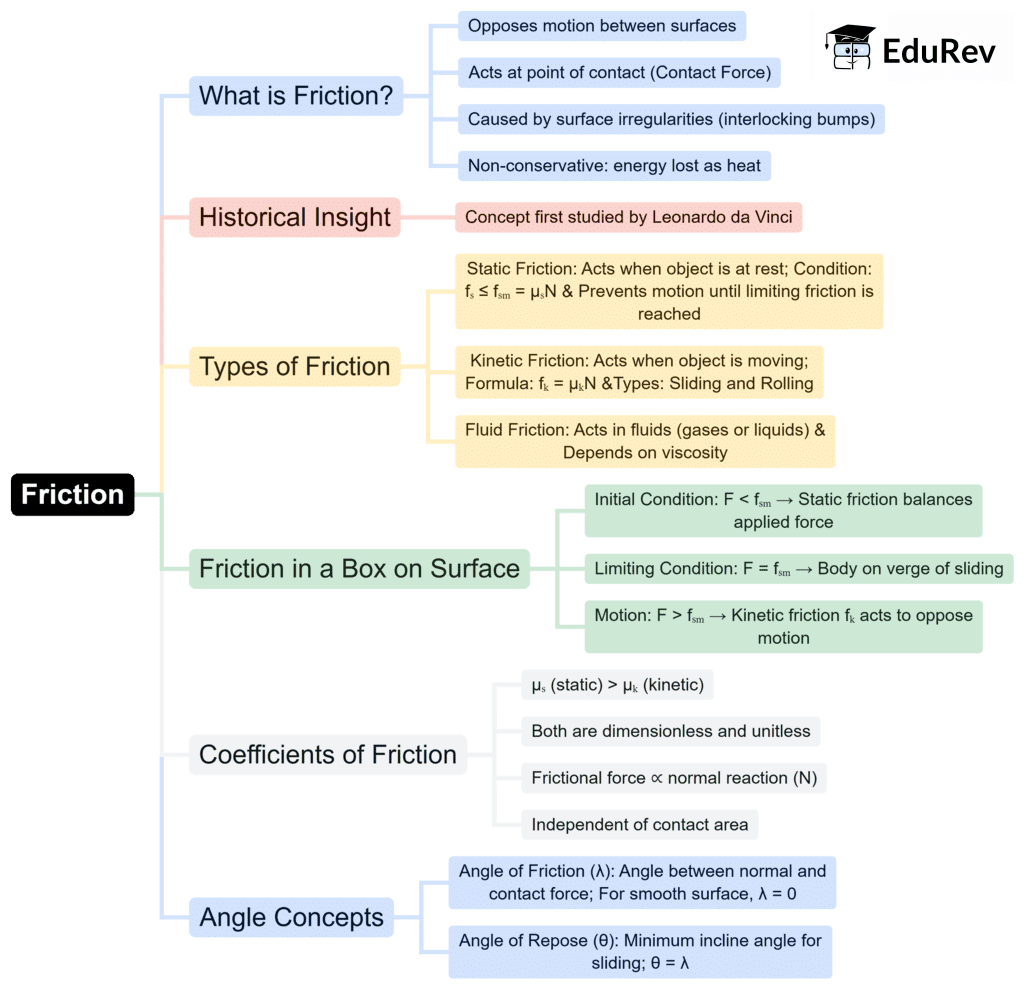JEE Exam > JEE Notes > Physics for JEE Main & Advanced > Mind Map: Friction
Mind Map: Friction | Physics for JEE Main & Advanced PDF Download

The document Mind Map: Friction | Physics for JEE Main & Advanced is a part of the JEE Course Physics for JEE Main & Advanced.
All you need of JEE at this link: JEE
|
268 videos|774 docs|209 tests
|
FAQs on Mind Map: Friction - Physics for JEE Main & Advanced
| 1. What is friction and why is it important in JEE exams? |  |
Ans.Friction is a force that opposes the relative motion of solid surfaces, fluid layers, and material elements sliding against each other. In the context of JEE exams, understanding friction is crucial as it is a fundamental concept in mechanics, which is a significant portion of the physics syllabus. Questions related to friction often test students' ability to apply Newton's laws of motion and solve problems involving static and kinetic friction.
| 2. What are the types of friction covered in JEE syllabus? |  |
Ans.In the JEE syllabus, the main types of friction covered include static friction, kinetic friction (also known as dynamic friction), and rolling friction. Static friction acts on objects at rest and prevents motion, while kinetic friction acts on moving objects. Rolling friction is the resistance encountered when an object rolls over a surface. Understanding these types is essential for solving related problems effectively.
| 3. How can I solve problems related to friction in JEE? |  |
Ans.To solve friction-related problems in JEE, start by identifying the forces acting on the object, including gravitational force, normal force, and frictional force. Apply Newton's laws to set up equations of motion. Use the coefficient of friction values provided in the problem to calculate the frictional forces. Practicing a variety of problems will enhance your problem-solving skills and speed.
| 4. Are there numerical problems on friction in JEE Main and Advanced exams? |  |
Ans.Yes, numerical problems on friction are commonly included in both JEE Main and Advanced exams. These problems may involve calculating the maximum static friction, determining acceleration of objects, or analyzing systems in equilibrium. It is important to practice these types of questions as they test both conceptual understanding and mathematical application.
| 5. How can I prepare effectively for friction topics in JEE? |  |
Ans.Effective preparation for friction topics in JEE involves a combination of theoretical understanding and practical application. Start by studying the fundamental concepts from NCERT textbooks and reference books, then move on to solving a variety of problems from previous years' JEE papers and mock tests. Additionally, using visual aids like diagrams and free-body diagrams can help clarify the concepts and improve problem-solving abilities.
Related Searches
















